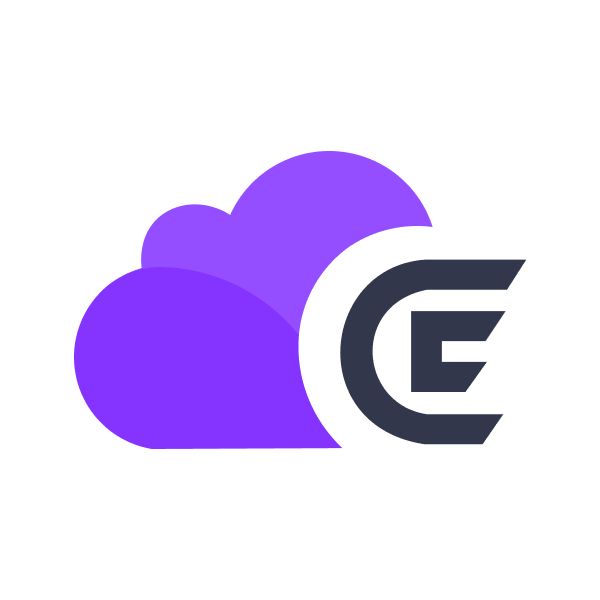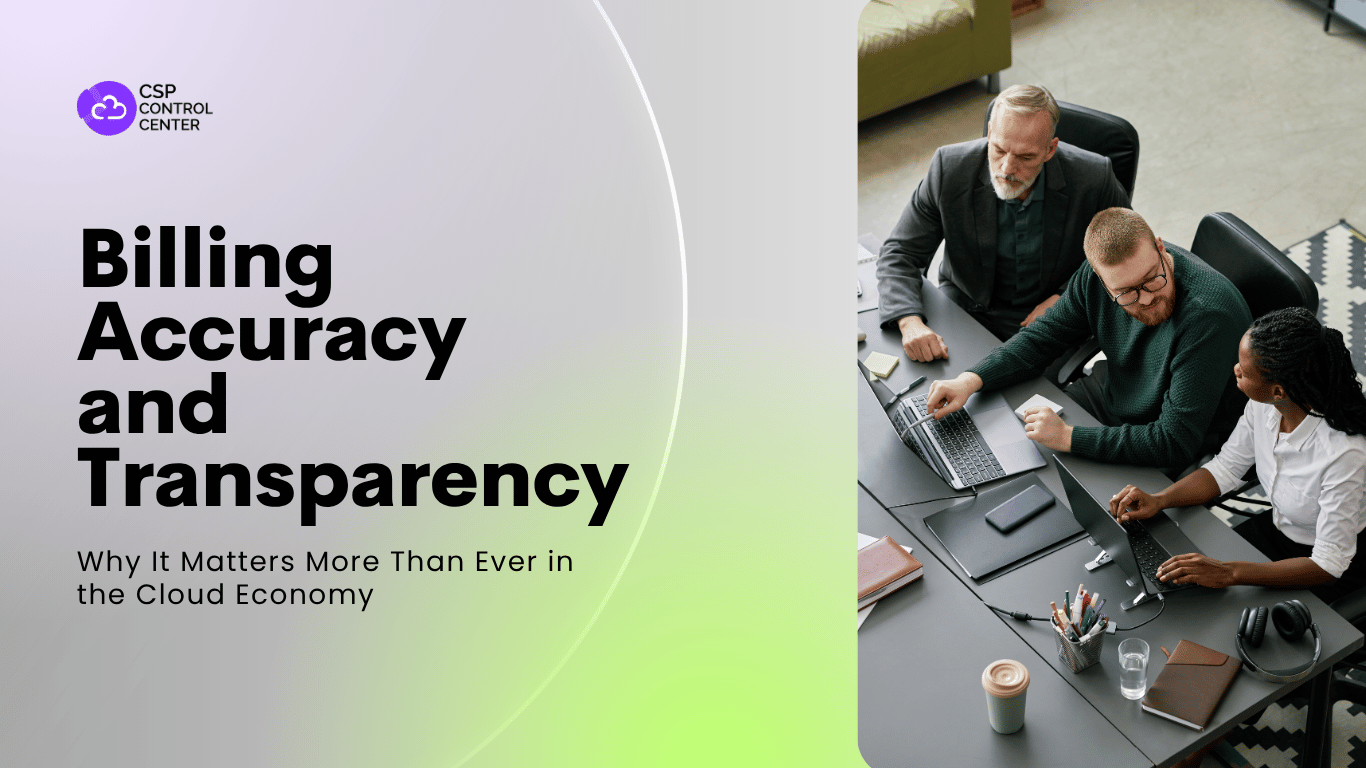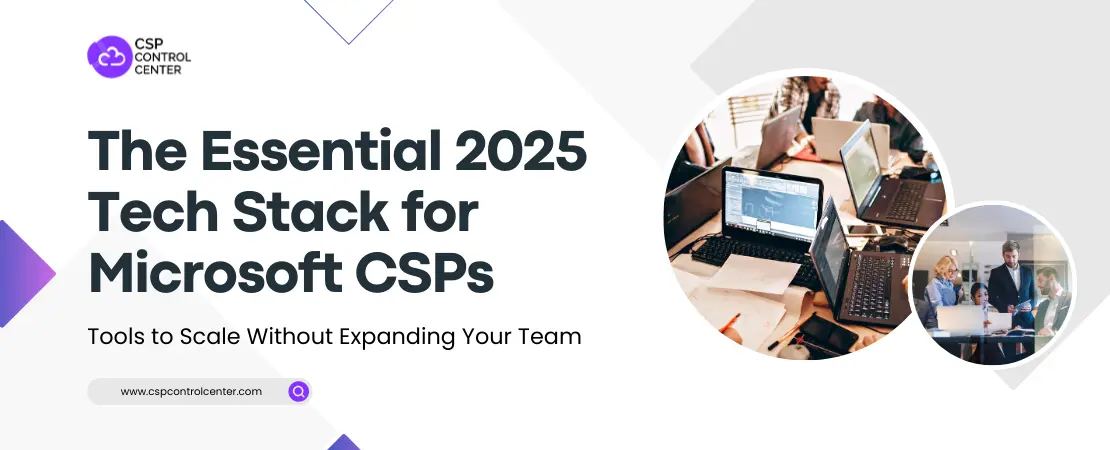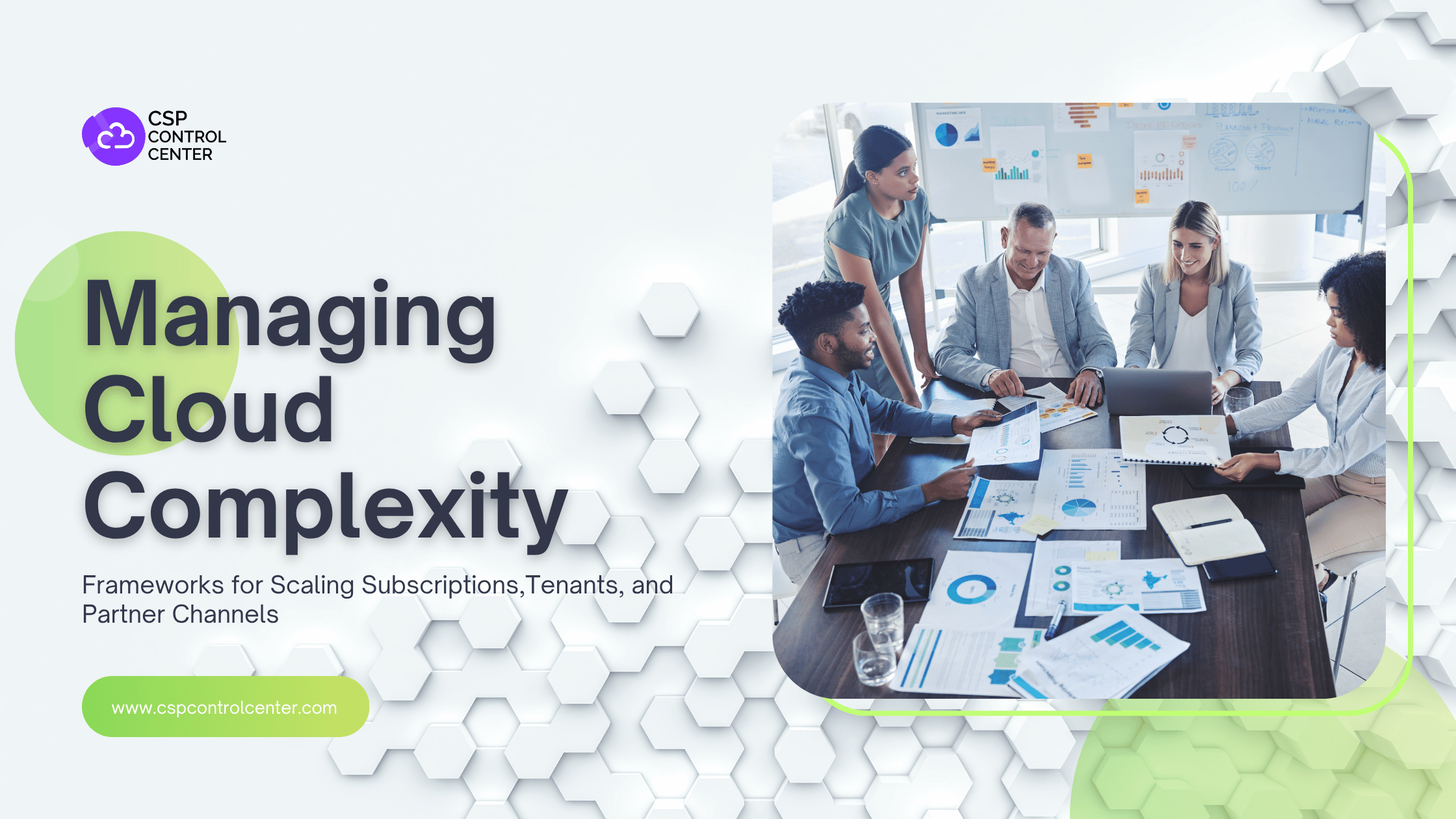Cloud billing is not the most exciting topic out there. But if you are in the business of delivering cloud services, you know it’s one of those things that can quietly make or break your customer relationships. As cloud services evolve, it is no longer just about selling licenses or provisioning virtual machines. Now it’s about tracking dynamic usage, understanding ever-changing pricing models, and making sure your customers don’t get a shock when they open their invoices. The global cloud computing market is projected to grow at a CAGR of 20.4%, reaching USD 2,390.18 billion by 2030.
The Cloud Economy Is Built on Complexity
As the cloud market expands, so do the challenges associated with this growth. One of the components is cloud billing. Cloud billing is not just limited to collecting payments, it is about building trust. Till a few years back, most IT purchases followed a predictable pattern: you bought servers, software licenses, and maintenance contracts with clear, upfront costs.
Today, your customers are consuming resources on the fly, spinning up VMs, deploying containers, scaling databases, adding users, and dropping services. Pricing is often metered and varies across regions, tiers, and even time-of-day usage. And if you are a cloud reseller or Cloud Solution Provider (CSP), you are likely juggling billing data from multiple upstream providers while trying to create clean, understandable invoices for your end customers.
Here is what CSPs and Managed Service Providers (MSPs) are juggling every month:
- Usage of data from multiple vendors and portals
- Tiered pricing, discounts, bundles, and margins
- Variable tax rules by geography or service type
- Reconciliation between internal and external usage of data
- Customer requests for customized billing
What Accurate Billing Really Means
Accurate billing in the cloud environment goes far beyond simply charging the right amount. It requires a sophisticated understanding of how resources are consumed, priced, and presented to customers. Let me break down what this looks like in practice.
At its core, precise metering requires real-time tracking across multiple dimensions simultaneously. It is not enough to simply count CPU hours or storage gigabytes. Modern cloud services involve complex interdependencies. It includes compute instances that scale automatically, storage that tiers between performance levels, network traffic that varies by region and destination, and API calls that trigger cascading services.
How Accurate Billing Supports Better Business
Accurate billing is essential for financial forecasting, operational efficiency, and long-term profitability. Billing errors don’t just frustrate customers; they impact internal teams. Resolving disputes, issuing refunds, or correcting invoices eats up time and resources. Every time a dispute arises, the internal teams have to dig through raw usage data, cross-reference it with subscription terms, and then translate their findings into a coherent explanation for a frustrated customer. Imagine redirecting all those hours towards proactive customer success, service improvement, or new business development. With precise billing, service providers can better analyze revenue streams, identify high-margin services, and forecast cash flow with greater confidence.
Why Accuracy Builds Long-Term Trust
Accurate billing not only reduces billing disputes but also helps build long-term trust with customers. Inaccurate billing can have consequences that reach beyond revenue loss. Let’s say your customer receives an invoice that seems off. Maybe they spot charges for a service they thought was cancelled, or they’re confused by a usage spike that wasn’t communicated. Suddenly, you are not just answering a billing question, you are defending your reputation. Even a minor billing dispute can trigger a customer to think about changing vendors. Apart from this, a small inaccuracy can-
- Delay payment cycles and hurt cash flow
- Trigger support escalations that drain your team’s time
- Result in write-offs or refunds
Transparency is no Longer Optional
We have hit a point in the cloud economy where transparency isn’t a nice-to-have; it’s expected. Customers are smarter and more hands-on than ever. They’re logging into portals, tracking usage, setting budgets, and comparing providers. If they feel like they are being kept in the dark, even unintentionally, they are going to ask questions. And if they don’t get clear answers, they will quietly start looking elsewhere.
The truth is, transparency isn’t just about being open, it’s about being proactive. Giving customers a detailed view of what they are using, when, and why, prevents confusion before it starts. It also shows that you are not trying to hide anything. That kind of openness creates a sense of partnership, not just a vendor-customer dynamic.
The Shift to Usage-Based Billing
Usage-based billing sounds great on paper, and in many ways, it is. Customers only pay for what they use, which feels fair and flexible. But the reality behind the scenes is more complicated. You have got constantly changing usage patterns, dynamic scaling, promotional credits, regional pricing, and now you are expected to make all that make sense on a single monthly invoice.
From the customer’s side, things can get frustrating fast. One month’s bill might be double the last, and without visibility into the “why,” all they see is a red flag. No one wants to dig through a PDF full of vague line items just to understand what they are being charged for.
Decoding Complex Pricing Models
Cloud pricing can become quite difficult to understand. Tiered plans, bundled services, and add-ons create invoices that are long and confusing. This can easily overwhelm the majority of the customers. Customers are not expecting you to simplify your pricing model overnight, but they do want clarity. They want to see what they are paying for, how it’s calculated, and why it matters.
Clear, itemized invoicing isn’t just good practice, it’s a competitive advantage. If your billing makes sense, you’re already doing better than half the market.
The Power of Real-Time Reporting
Real-time reporting isn’t just a useful feature anymore; it’s becoming the baseline expectation. Think about how we use our smartphones. We track our data usage, we get notified when we are nearing a limit, and we see breakdowns of what apps are using the most bandwidth. That level of insight is what people now expect from every digital service, including cloud platforms.
Imagine logging into a dashboard and seeing your current month’s usage ticking upward in real time, broken down by service, region, or user. That’s not just useful, it’s empowering. It lets customers make changes before they overspend. It gives IT teams the data they need to justify budgets. And it also cuts down on surprise invoices, which means fewer support tickets and fewer unhappy phone calls.
Core Elements of a Transparent & Accurate Billing Process
If your aim is to improve your billing system and create a transparent and accurate billing process, then there are a few things you absolutely need to have in place. These non-negotiable features include:
Automated Reconciliation
Manually matching usage data between your upstream provider and your own systems can lead to errors. One typo or missed update and the whole invoice could be incorrect. Automated reconciliation ensures that what you bill is based on accurate, real-time usage metrics.
Flexible Pricing Logic
Cloud billing isn’t one-size-fits-all. There are discounts, bundles, special offers, and region-based pricing that must be taken into account. You need a system that can handle all of that without making you jump through hoops every time a pricing model changes. Flexibility here saves time and keeps your margins intact.
Real-time Usage Tracking
Accurate billing starts with precise metering. Your customers should be able to see how much they are using as they go, not waiting for an invoice at the end of the month. Near real-time tracking gives them the visibility and control they expect in a usage-based world.
Granular Invoicing
Some customers might want to see usage per project, while others might want to sort costs by region, department, or even individual users. Granular invoicing becomes essential for larger accounts with complex internal reporting needs.
Custom Invoice Templates
Not every customer will ask for the same level of detail. While one customer might need every service listed out line-by-line, another might prefer a clean, summarized format. Giving customers a choice in how their invoice is presented shows you understand their needs.
Common Pitfalls to Watch Out For
Even with the best intentions, you can make billing mistakes that can impact on the customer experience negatively. Some of the most common mistakes that impact billing accuracy and transparency are:
Outdated Pricing
Not updating your billing platform when Microsoft changes its rates can either eat into profit margins or damage trust by overcharging customers.
Vague Line Items
Using generic terms like “miscellaneous fees” or “cloud usage” might confuse the customers and lead to an increase in support tickets. The more transparent your line items, the fewer billing disputes you will face.
Overcomplicating Pricing Models
Offering too many pricing tiers and add-ons confuses customers and put pressure on internal processes. With too many options, the billing teams cannot keep up at times, leading to unhappy customers.
Ignoring User Experience
Billing is not just another process but a part of the customer experience. Customers don’t just want accurate bills, they want billing experiences that feel modern, intuitive, and helpful. As billing is the most regular touchpoint you have with a customer, even a small confusion can lead to a bad customer experience.
Treating Billing as a One-Time Project
Cloud billing evolves constantly with the launch of new services, price updates, and policy changes. Apart from this, markets evolve, customer needs change, and new technologies create new billing requirements.
Automation to the Rescue
No service provider wants to spend long hours copying data from spreadsheets, vendor portals, and generating manual invoices. Even the possibility of one error slipping and reaching the customer can damage business relationships and reputation. To tackle these challenges, many CSPs are shifting towards advanced automation tools specifically designed for cloud billing.
Solutions like CSP Control Center monitors usage data, automate pricing and custom offers, streamline invoicing across multiple tenants and services. Rather than manually pulling data from different sources, CSPs can rely on such platforms to detect anomalies, flag unusual usage patterns, and maintain billing accuracy — while at the same time integrating with existing tools like CRMs or accounting systems.
Automation not only saves time it also reduces errors. If the billing system runs smoothly, your team is free to focus on strategy, growth, and customer success.
Industry Trends That Are Raising the Bar
The pressure to improve billing is getting higher and higher for CSPs. Here are some real-world shifts that are pushing CSPs to do better:
Self-service is Becoming the New Normal
Customers no longer want to wait for bills to arrive at the end of the month. They expect a portal where they can track live usage, download reports, and make track payments. That means the billing data must be accurate and up to date at all times.
Billing Transparency is Needed for Compliance
Certain industries require clear, auditable billing trails, especially when it comes to how services are provisioned and charged. Billing transparency is no longer just about customer satisfaction, it’s about compliance as well.
Margins are Shrinking
As competition increases, the partner incentives decrease, and CSPs operate on thin margins. That leaves very little room for billing errors, write-offs, or delayed payments. Without billing automation, CSPs are at risk of accumulating losses on certain customer accounts.
What Smart Service Providers Are Doing Differently
Most successful CSPs treat billing as a strategic function rather than just a backend process. Instead of assigning billing to finance teams, they integrate it into their customer experience strategy. Here’s how they are getting ahead:
View Billing Data as Business Intelligence
Billing data can be one of the most important sources of customer intelligence. Instead of relying solely on sales teams to identify upselling opportunities, analytics can automatically flag customers whose usage patterns suggest they are ready for premium services.
Run Internal Audits
Successful CSPs try to stay ahead of problems. They run regular audits of the invoices so that any anomalies can be caught before the invoice reaches the customers. This small step builds huge credibility over time.
Invest in Clear Documentation
Clear documentation has a direct impact on customer satisfaction. By creating easy-to-understand guides, invoice explainers, and help articles, top-performing CSPs reduce confusion and cut down on support queries. When users can quickly find answers without having to raise a ticket, it builds confidence and trust.
Use Billing as a Competitive Differentiator
Transparent and well-structured billing can be a competitive differentiator. CSPs that send out branded, customizable invoices tend to stand out from others. Features like real-time cost alerts, detailed usage reports, and easy payment options can become a deciding factor for customers.
Educate Customer on Cloud Bill
Many billing disputes happen simply because the customer doesn’t understand what they are looking at. Smart providers don’t just send bills; they explain them to the customers as well. This is done through onboarding sessions, monthly check-ins, and webinars focused on billing topics.
The Future of Billing in the Cloud Economy
As the cloud economy evolves and customers demand more transparency, billing will only grow more critical. Whether you are a CSP or MSP, billing accuracy and transparency are customer experience priorities. Customers today expect billing to be fast, clear, and correct. By investing in accurate metering, clear invoicing, and proactive communication, you can build trust and streamline operations. When you automate reconciliation, offer real-time visibility, and invest in better documentation, you turn billing into a value-added experience.

 CSP Control Center
CSP Control Center
 CloudEvents
CloudEvents


